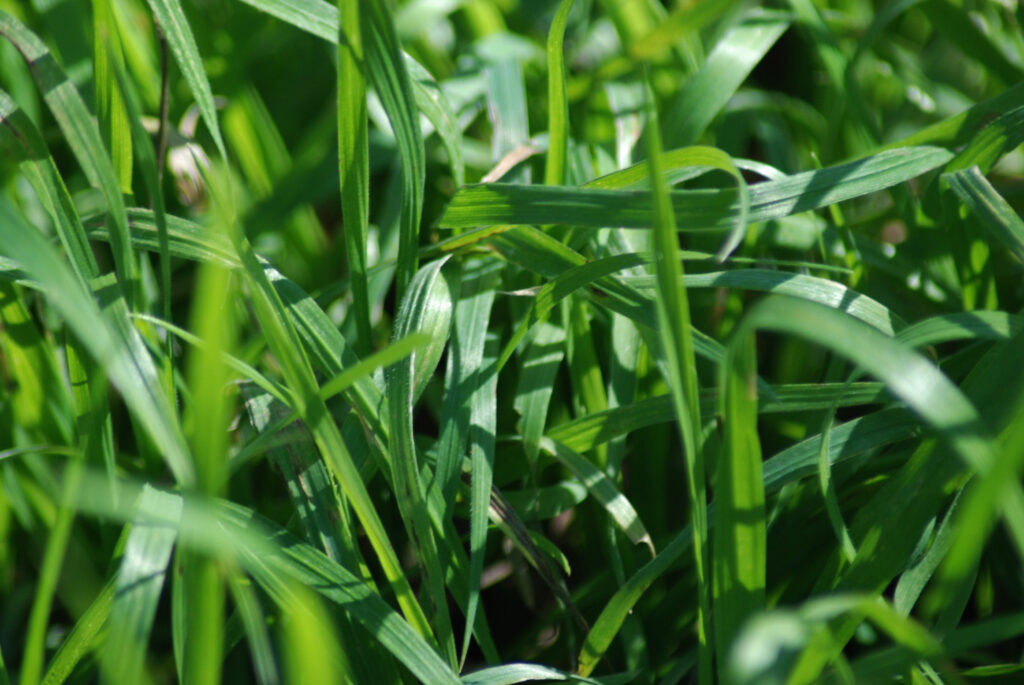50% Off First Application¹
Call 1-855-940-1479
and connect with a TruGreen consultant
St. Augustine Grass is a Popular Choice
From Florida to Texas, St. Augustine grass is a popular choice for homeowners who want a lush, green carpeted lawn with just a medium amount of maintenance. Known in some circles as “Charleston Grass,” St. Augustine grass is a warm-weather grass so it needs special attention when the temperature rises.
States where St. Augustine Grass fares well include:
- Florida
- South Carolina
- North Carolina
- Georgia
- Alabama
- Louisiana
- Mississippi
The grass is native to North America but it’s also found as far as the Caribbean and in the Mediterranean as well.

Characteristics of St. Augustine Grass
This particular species of grass is dark green and grows very thickly, crowding out weeds and other invasive species. The blades are flat and typically grow to about 4-6 inches long when left unattended, so St. Augustine grass does need frequent mowing to be contained.
St. Augustine/Charleston grass grows in “runners,” spreading aboveground quickly as it grows. It’s a good choice for wide, flat lawns as its growth is uniform, but be cautious to mow in a linear pattern as mow lines will show.
The grass is relatively shade tolerant but in areas where it lives in complete shade, blades will become coarse and stringy.
St. Augustine Grass needs moderate care
In coastal climates where much rainfall is experienced, it’s not necessary to water weekly. In drier, more inland climates, however, once to twice weekly watering will help your St. Augustine grass grow consistently.
As with any type of warm weather grass, it’s important to aerate St. Augustine Grass once a year and apply a nitrogen-rich fertilizer at least twice annually.

There are a few things to keep in mind if you’re considering a St. Augustine grass lawn:
1) The grass has only just recently become available commercially via seed starter, so it’s usually planted with plugs or using sod strips.
2) St. Augustine grass can only tolerate moderate traffic, so plant only in areas that see light to medium play and wear.
3) The grass is relatively resistant to bugs, but the Southern Lawn Cinch Bug is of big concern in Florida, particularly.
4) Warm weather grass typically goes dormant when the weather cools, so mow less frequently in fall and cooler spring months.
Is St. Augustine Right for Your Yard?
If you’re unsure which grass species will grow best in your yard, contact a local lawn care provider. A trained professional can help you plant, fertilize, and manage your lawn so you’ll never have to worry about whether or not you’re handling it correctly.
St. Augustine grass is a popular choice for homes in the Southeast, but it may grow well in other mild climates, too. If your home gets moderate rainfall, maintains above-freezing temperatures most of the year, and has adequate sunshine, St. Augustine grass may be the species you need for a lush, healthy carpet.

TruGreen will gladly visit your property as often as needed between scheduled visits to make any necessary adjustments and to ensure your satisfaction.
Getting Started with TruGreen
- Call or fill out the form above to reach a lawn care specialist.
- Know the square footage of your yard, as well as any specific areas of concern.
- With the help of your specialist, create a customized lawn care plan that meets your lawn’s needs.
- Schedule your Healthy Lawn Analysis2 to start your service.
